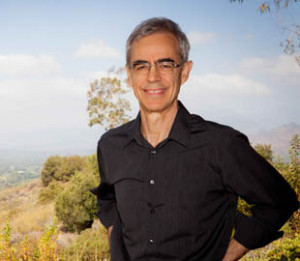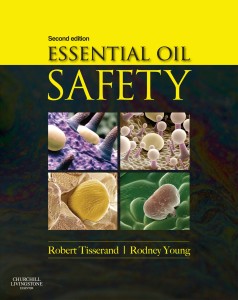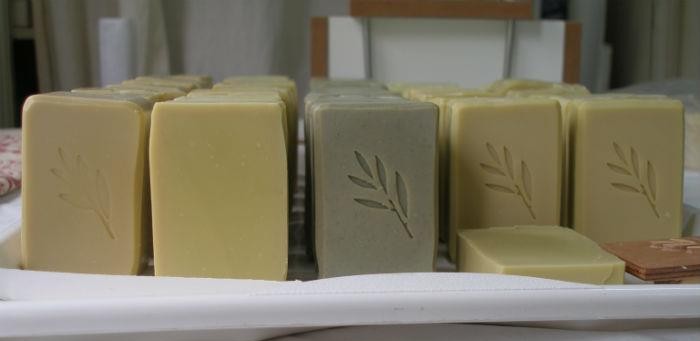
Robert Tisserand is a world-recognised expert on essential oils and aromatherapy. He has written several books on these topics and is active as an author, educator, speaker and supplier of aromatherapy products.
Robert’s Essential Oil Safety book, first published in 1995, is considered an indispensable reference for aromatherapists and other professionals who work with essential oils. This includes soap, toiletries & candle makers who choose natural essences to fragrance their products. And yet, it is not uncommon to find people who believe that GMP and safety issues do not necessarily apply to essential oils, in that essential oils are natural.
Robert, would you say that natural ingredients are always 100% safe?
No, absolutely not, for the simple reason that “100% safe” does not apply anything in the known universe, whether natural or synthetic. It’s an unrealistic concept!
Are synthetic fragrances safer than essential oils, both for the soap- or candlemaker, and for those using the finished product?
You can’t generalize either way – natural is not safer, and synthetic is not safer, because safety has little to do with these classifications. With one exception. Fragrance oils (which are mostly synthetic) seem to be more likely to elicit adverse reactions when inhaled by people with asthma. The reason for this is that fragrance oils in general have a higher concentration of “high impact” odorants – i.e. powerful smells. And these are more likely to elicit bronchial hyperreactivity, because strong smell generally does equate with eye and respiratory irritation.

What is the first recommendation you would like to give to those who work with fragrances.
For essential oils, buy a copy of Essential Oil Safety Second Edition! It’s an extensive reference text, and is the only source of comprehensive safety information for essential oils. For both essential oils and single aromachemicals you could also consult the websites for Good Scents, and the International Fragrance Association.
Do we need special equipment when handling fragrances (including essential oils)?
You need a dedicated refrigerator to keep your essential oils in. Or fragrance oils. Wine coolers are not cold enough, and freezers are a little too cold. Your oils will keep about twice as long, especially if you live in a warm climate. These oils oxidize with time – over a period of months – and when they do so they lose freshness and also healing properties. Cold temps and protection from UV light help prevent oxidation.
Otherwise, not much that’s very specialized. You need to be measuring either by volume or weight (probably weight) so you need measuring cylinders, pipettes, balances etc. Do not put undiluted oils in plastic containers, as they may dissolve the plastic, and also may leach phthalates out of the plastic. However, diluted oils are fine in plastic containers.
Are essential oils “all the same” in terms of quality?
No they are not, for a variety of reasons. Oils from different geographical regions usually have different chemical compositions, so smell slightly different. For example, USA peppermint oils cost more because they smell and taste better than non-USA peppermint oils. Some essential oils are just not very well distilled (wrong temperature, too short or too long a time in the still…) Obviously if an essential oil has been adulterated (with a cheaper oil, or a synthetic substance) then it’s a very poor quality oil.
What should we look for when purchasing essential oils?
- Suppliers should be telling you (1) Botanical name (2) country of origin and (3) they should provide MSDS sheets.
- Suppliers should be able to tell you when the oil was distilled – at least the year. Generally speaking, you want to be buying oils that are as fresh as possible, i.e. less than 12 months from distillation.
- It’s a positive sign if a supplier either posts analyses of their essential oils on their website, or will provide these on request. But, some excellent suppliers don’t do this.
- Price is generally a guide to quality, unless you are looking at one of the multi-level marketing companies, where prices are artificially high.
Ideally, get to know what a good quality oil should smell like. OK, it takes years, but start now!
When it comes to fragrances (synthetic or natural as they may be), is there a “safe enough” rule of thumb when it comes to quantities?
No, unfortunately there is no simple fix. Safe concentrations can range anywhere from 0% to 100%, though it’s true that most fall into a narrower range – about 0.1% to 10%.
So, whether you use synthetic fragrances or naturally extracted essential oils, and whether you sell your soap or make it for your family only, prudence suggests you invest some time developing your own material safety (and safe handling) procedures. If you would like to do that following Robert Tisserand’s advice, the new edition of his Essential Oil Safety book can be ordered as detailed at roberttisserand.com/essential-oil-safety-book-second-edition/.
Get to know Robert better by checking out his informative and extensive Website, as well as his blog at www.roberttisserand.com/blog/.
—————————————————
Copyright credit: Essential Oil Safety, written by Marina Tadiello, was published in the Jan/Feb 2014 issue of Saponifier Magazine. It is reprinted here with full permission of the publisher, www.Saponifier.com.
